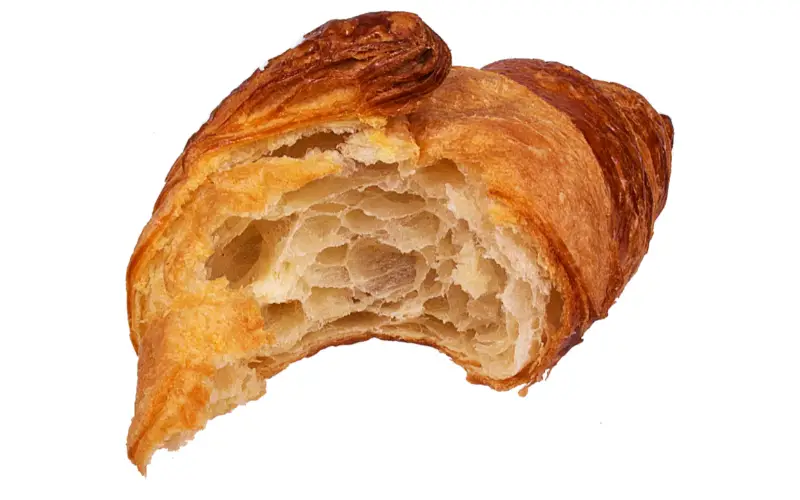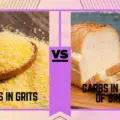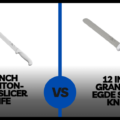Direct Answer:
The key difference between a croissant and sliced bread lies in their preparation, taste, texture, and nutritional content. A croissant, a rich, buttery, flaky pastry, is typically enjoyed as a breakfast item or snack, while sliced bread, made from a simple mixture of flour and water, is a versatile staple found in almost every household.
Croissants and sliced bread are both popular types of baked goods enjoyed by people around the world, but they have quite a few differences. A croissant is a flaky, crescent-shaped pastry that comes from France. It has a rich buttery taste, and it’s often enjoyed as a treat for breakfast or brunch. On the other hand, sliced bread, which originated in the United States, is a staple food item in many homes. It’s versatile and can be used to make sandwiches, toast, or even just eaten plain with a bit of butter or jam. While they both come from the baking tradition, the choice between croissants and sliced bread often comes down to personal preference and the specific meal occasion.
What Is A Croissant?

A croissant is a type of pastry that originated in France. The word “croissant” actually means “crescent” in French, which describes its traditional curved shape.
Croissants are made by layering thin sheets of dough with butter, then folding and rolling the dough several times. This process, known as “laminating,” creates the croissant’s signature flaky, light texture and rich, buttery flavor. The dough is then shaped into a crescent, left to rise, and baked until it’s golden brown.
Traditionally, croissants are enjoyed for breakfast or as a snack. They can be eaten plain or filled with ingredients like chocolate, cheese, ham, or fruit preserves. Croissants are also often used to make sandwiches, particularly in France.
Is Croissant A Bread?

A croissant is a type of pastry, not a bread. The difference lies primarily in the preparation of the dough. Croissants are made using lamination, which involves folding butter into the dough multiple times to create thin, delicate layers. This process gives croissants their unique, flaky texture and rich flavor.
Croissant vs Sliced Bread: The Comparisons
Taste:
Croissant: This French pastry is all about a rich, buttery flavor. When freshly baked, the taste is heavenly and irresistible.
Sliced Bread: The taste is generally mild and neutral, serving as a blank canvas for spreads, toppings, or sandwich fillings. The flavor can slightly vary depending on the type of bread (whole wheat, white, rye, etc.).
Texture:
Croissant: Known for its flaky, crispy exterior and soft, tender interior. The numerous buttery layers provide a unique mouthfeel.
Sliced Bread: The texture can range from soft and fluffy to dense and firm, depending on the type and preparation method. Ideal for holding up spreads and sandwich fillings.
Minerals:
Croissant: Typically low in minerals. Some croissants may contain small amounts of calcium and iron, depending on the flour used.
Sliced Bread: Generally rich in minerals, especially if made with whole grains. Whole-grain bread can provide significant amounts of magnesium, selenium, and iron.
Vitamins:
Croissant: Not a significant source of vitamins, although some brands may fortify their products with vitamins.
Sliced Bread: Often enriched with B vitamins and may contain more vitamins if made with whole grain flour.
Fat Type:
Croissant: Contains a high amount of saturated fat due to the butter used in the dough.
Sliced Bread: Usually low in fat, but this can vary depending on the type of bread. Whole grain bread, for example, contains beneficial fats from the grain.
Carbs:
Croissant: High in carbs, mostly from refined flour. The lack of fiber results in quick digestion and absorption of these carbs.
Sliced Bread: Carbohydrate content can vary greatly. White bread is high in simple carbs, while whole grain bread contains complex carbs and more fiber, leading to slower digestion and absorption.
Ingredients:
Croissant: Primarily made of flour, butter, milk, sugar, yeast, and salt. The dough is layered with butter and folded several times to achieve a flaky texture.
Sliced Bread: Basic ingredients include flour, water, yeast, and salt. Variations exist, such as the addition of sugar, oil, milk, and various grains and seeds for different types of bread.
Fiber:
Croissant: Contains minimal fiber due to the use of refined flour.
Sliced Bread: Fiber content depends on the type of flour used. Whole grain bread is high in fiber, promoting digestive health and satiety, while white bread contains less fiber due to the refining process.
FAQs
Is Brioche the Same as a Croissant?
No, brioche is a type of bread, rich and sweet, made from a dough containing a high amount of butter and eggs. Croissant, however, is a flaky pastry with its iconic crescent shape.
Which is More Fattening: a Croissant or a Doughnut?
Typically, a croissant contains fewer calories and less fat than a doughnut, although this can vary based on size and additional ingredients.
Why Does a Croissant Cost Twice as Much as a Bagel?
The cost difference is primarily due to the labor-intensive process of making croissants, which involves a technique of layering and rolling dough and butter repeatedly.
Are Croissant Sandwiches Unhealthy?

It depends on the fillings and how frequently you consume them. While croissants tend to be high in fat and calories, choosing nutritious fillings can make for a balanced meal.
Are Croissants Healthy for Weight Loss?

Due to their high butter content, croissants are high in calories and fat, and may not be the best choice if you’re trying to lose weight. Opting for whole-grain bread might be a healthier alternative.
Conclusion
While both croissants and sliced bread each have their unique qualities when it comes to overall nutritional value, sliced bread, especially whole grain variations, generally offers more. Croissants, with their rich, buttery flavor and flaky texture, are a delightful treat often associated with a luxurious breakfast or brunch. On the other hand, sliced bread, due to its versatility, simplicity, and convenience, has become a staple in many homes around the world. The choice between a croissant and sliced bread comes down to personal preference, dietary needs, and the specific meal or snack occasion.
Key Points
- A croissant is a rich, flaky, buttery pastry and a popular choice for breakfast or snacks.
- Sliced bread, made from flour and water, is a staple food item versatile in its uses.
- Croissants and sliced bread differ in taste, texture, and nutritional content.
- Croissants are not classified as bread due to the absence of essential bread ingredients: flour and yeast.
- While croissants are delicious, they tend to be high in calories and fat, making them less ideal for weight loss compared to whole-grain bread.
- The choice between a croissant and sliced bread should align with your dietary needs, preferences, and lifestyle.
Croissant vs Bread Nutritional Comparison
| Nutrient | Croissant | Bread |
|---|---|---|
| Calcium | 37mg | 165mg |
| Magnesium | 16mg | 59mg |
| Vitamin B3 | 2.188mg | 6.25mg |
| Iron | 2.03mg | 4.09mg |
| Manganese | 0.33mg | 1.377mg |
| Zinc | 0.75mg | 1.47mg |
| Potassium | 118mg | 223mg |
| Fiber | 2.6g | 4.7g |
| Phosphorus | 105mg | 188mg |
| Polyunsaturated fat | 1.094g | 1.72g |

John Hebdon is a food enthusiast, passionate chef, and author of various articles and blog posts related to food and cooking. With a deep love for all things culinary, John’s blog serves as a platform to share his extensive kitchen experiences with a broader audience.
In addition to his culinary expertise, John has a flair for writing and a natural ability to share his passion for food with others. His articles and blog posts are informative, engaging, and packed with practical tips for readers of all skill levels.
As a food enthusiast and writer, John is always on the lookout for new and exciting culinary experiences. Whether it’s trying out a new restaurant, experimenting with a new recipe, or simply sharing a favorite dish with friends and family, John is always eager to explore and share the world of food with others.







